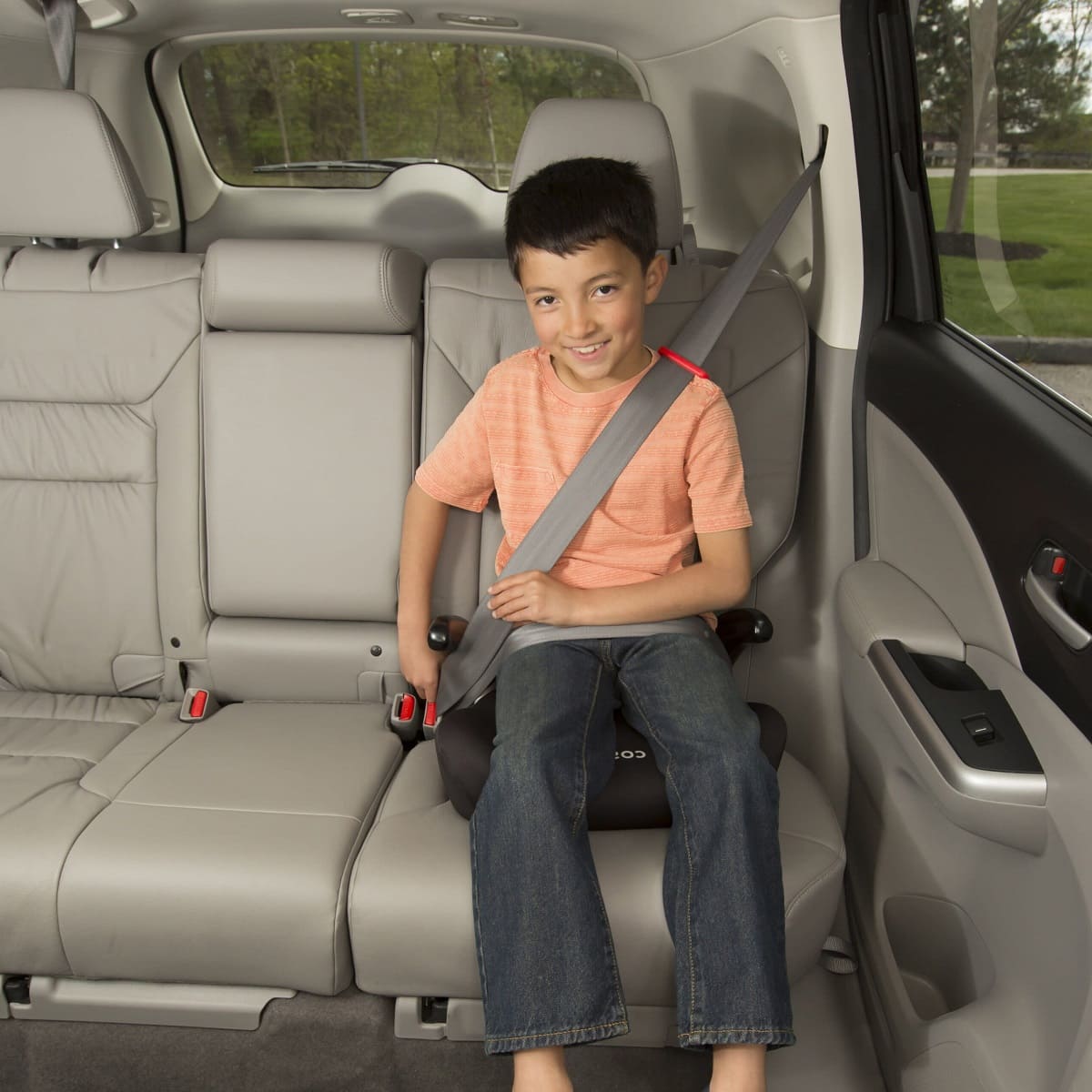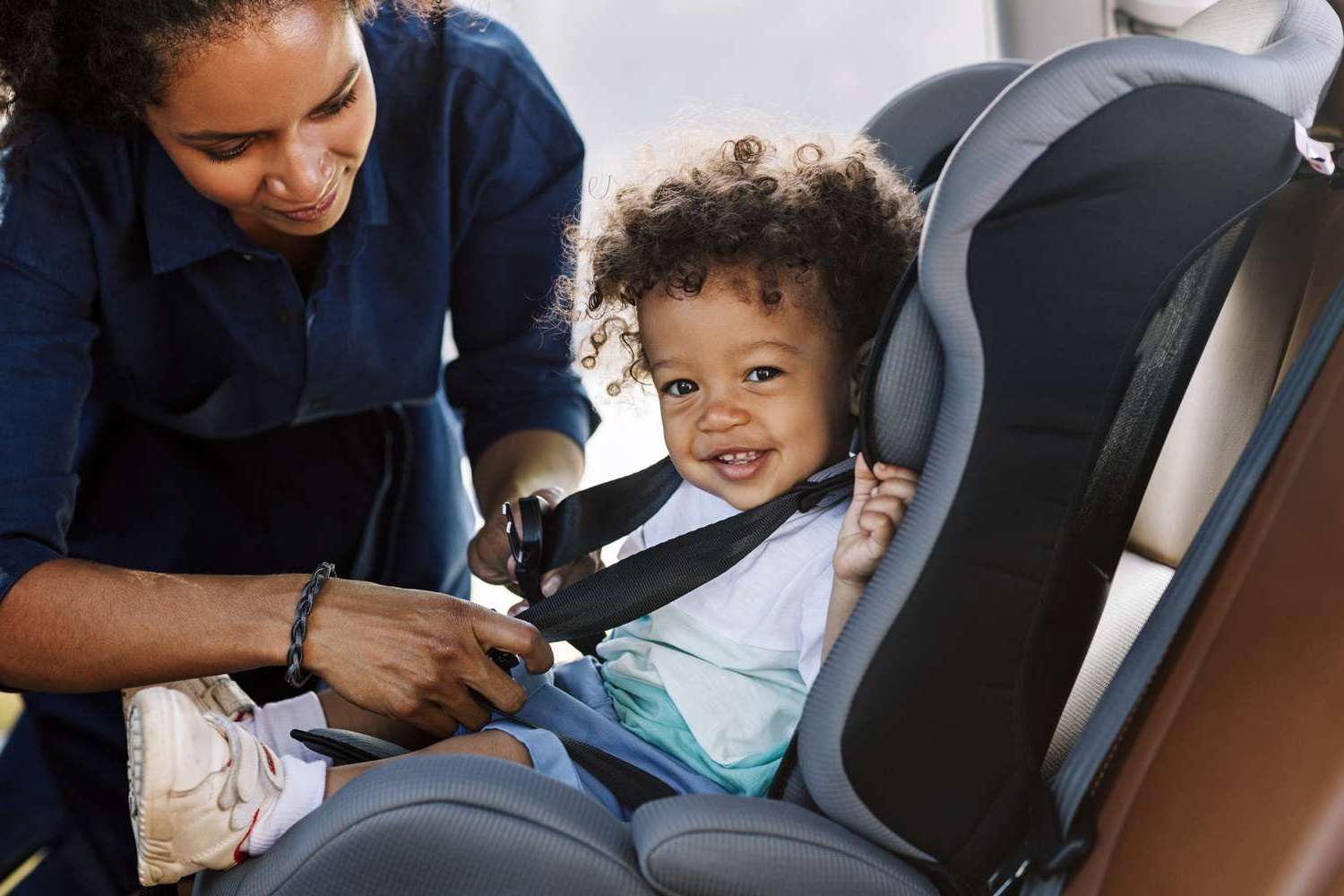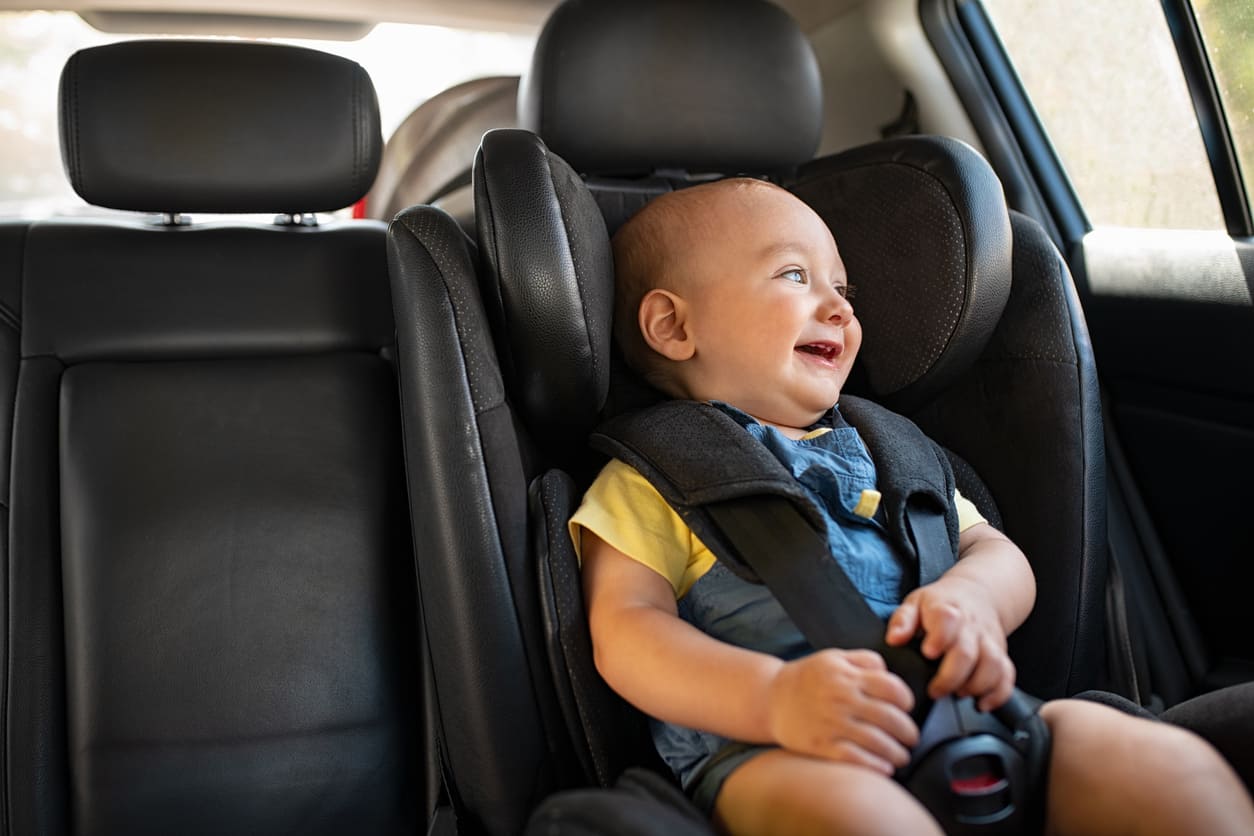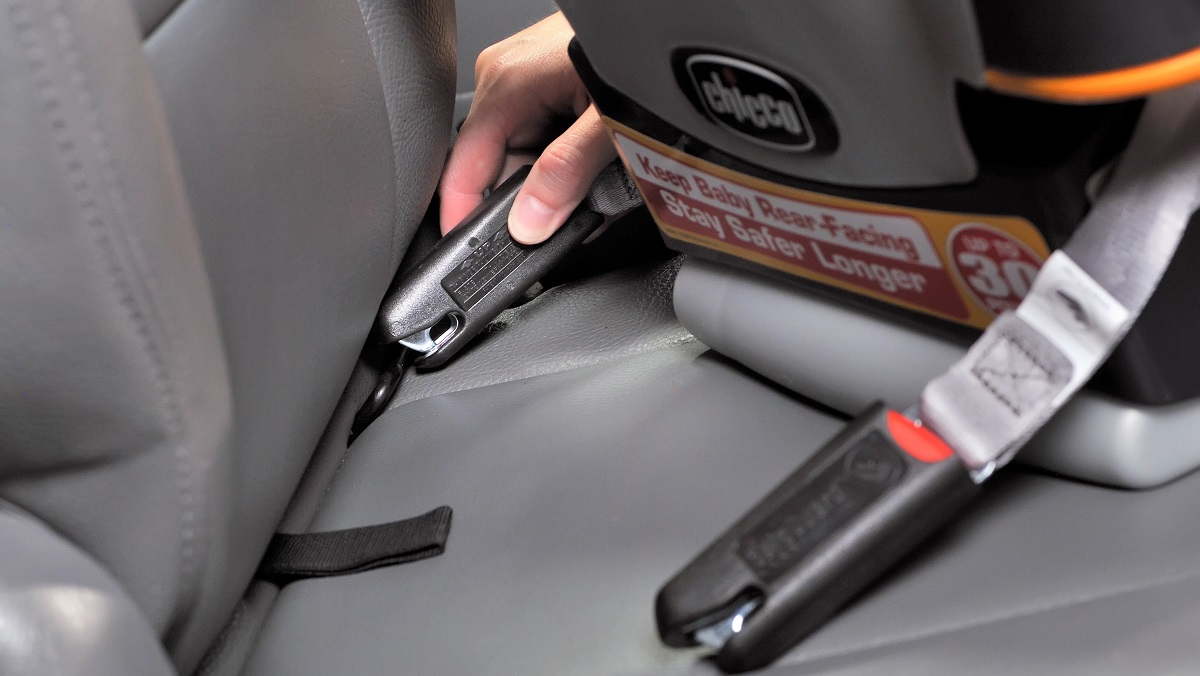Home>Maintenance & Safety>Child & Elderly Safety at Home>When Can A Child Stop Using A Booster Seat In Massachusetts?


Child & Elderly Safety at Home
When Can A Child Stop Using A Booster Seat In Massachusetts?
Modified: August 27, 2024
In Massachusetts, learn the age and height requirements for when a child can stop using a booster seat. Ensure child and elderly safety at home.
(Many of the links in this article redirect to a specific reviewed product. Your purchase of these products through affiliate links helps to generate commission for Storables.com, at no extra cost. Learn more)
Introduction
Ensuring the safety of children in vehicles is a paramount concern for parents and caregivers. In Massachusetts, as in many other states, specific laws and guidelines govern the use of booster seats for children. Understanding these regulations and the factors that influence the transition from a booster seat to a regular seat is crucial for safeguarding the well-being of young passengers.
The decision to transition a child from a booster seat to a regular seat is not solely based on age but also takes into account the child's height, weight, and developmental stage. By delving into the Massachusetts booster seat laws and exploring the various factors that influence this transition, parents and caregivers can make informed decisions to ensure the safety and comfort of their children during car journeys.
Ensuring that children are properly secured in vehicles is not just a matter of compliance with the law; it is a fundamental aspect of responsible caregiving. As such, understanding the nuances of booster seat regulations and the considerations involved in transitioning to a regular seat is essential for promoting the safety and well-being of young passengers on the roads of Massachusetts.
Key Takeaways:
- Kids in Massachusetts need a booster seat until they’re 8 years old or 57 inches tall. But it’s not just about age and height—parents should also think about how the child sits and fits in the car.
- Parents and caregivers play a big role in deciding when a child can switch from a booster seat to a regular one. They need to consider the child’s size, comfort, and safety, even after following the state laws.
Massachusetts Booster Seat Laws
In Massachusetts, the law requires that children must use a booster seat until they are at least 8 years old or over 57 inches tall. This regulation is in place to ensure that children are adequately protected while traveling in motor vehicles. The use of booster seats is crucial for enhancing the safety of young passengers, as they provide the necessary support to ensure that seat belts fit properly.
The Massachusetts booster seat laws are designed to align with the best practices recommended by safety experts and organizations. By adhering to these regulations, parents and caregivers can help reduce the risk of injury to children in the event of a car accident. It's important to note that these laws are in place to safeguard children and should be followed diligently.
Additionally, the law stipulates that children must be secured in a federally approved child passenger restraint that is appropriate for their age, height, and weight. This means that parents and caregivers must select booster seats that are suitable for the specific needs of their children, taking into account their physical development and size.
Understanding and complying with Massachusetts booster seat laws is essential for ensuring the safety of children during car journeys. By following these regulations, parents and caregivers can contribute to creating a secure and protected environment for young passengers in vehicles across the state.
In summary, Massachusetts booster seat laws are designed to prioritize the safety and well-being of children while traveling in motor vehicles. By adhering to these regulations and using appropriate booster seats, parents and caregivers can play a vital role in safeguarding young passengers on the roads of Massachusetts.
Factors to Consider
When determining when a child can stop using a booster seat in Massachusetts, several crucial factors come into play. While the state law provides a baseline requirement, it's essential to consider additional elements to ensure the safety and comfort of young passengers.
1. Height and Weight
Children vary significantly in terms of height and weight, and these factors play a pivotal role in determining when they can transition from a booster seat to a regular seat. While the law in Massachusetts specifies a minimum height of 57 inches for transitioning out of a booster seat, it's important to assess whether a child's physical dimensions align with the requirements for safe seat belt usage.
2. Developmental Stage
Beyond numerical age, a child's developmental stage is a crucial consideration. Some children may reach the height requirement but may not yet possess the physical maturity to safely use a regular seat belt. Assessing a child's overall development, including their ability to sit properly in a vehicle seat and maintain proper positioning throughout a journey, is essential in determining readiness for transitioning out of a booster seat.
3. Comfort and Safety
The comfort and safety of the child should always be at the forefront of the decision-making process. Even if a child meets the minimum height requirement, it's important to ensure that they can sit comfortably in a regular seat without the need for additional support. Additionally, transitioning to a regular seat should not compromise the child's safety in the event of sudden stops or collisions.
4. Vehicle Type
The type of vehicle in which the child will be traveling also influences the decision to transition from a booster seat. Different vehicles may have varying seat belt configurations, and it's crucial to ensure that a child can safely and securely use the seat belt in the specific vehicle they will be riding in.
5. Parental Discretion
Ultimately, parents and caregivers are in the best position to assess their child's readiness to transition from a booster seat to a regular seat. While adhering to state laws is essential, parental discretion, based on a thorough consideration of the child's physical development and safety, is paramount in making this decision.
By taking these factors into account, parents and caregivers can make informed decisions regarding the transition from a booster seat to a regular seat for their children, ensuring their safety and well-being during car journeys in Massachusetts.
Transitioning to a Regular Seat
Transitioning a child from a booster seat to a regular seat is a significant milestone that reflects their growth and development. While Massachusetts law provides specific guidelines, the decision to make this transition involves careful consideration of various factors to ensure the safety and comfort of the child.
When contemplating the transition to a regular seat, it's essential to assess the child's readiness from multiple perspectives. Firstly, the child's height and weight should align with the minimum requirements specified by law. In Massachusetts, reaching a height of 57 inches marks a crucial threshold for considering the transition. However, it's important to remember that this criterion serves as a baseline, and additional factors must be taken into account.
Beyond meeting the height requirement, the child's developmental stage plays a pivotal role in determining their readiness for a regular seat. Some children may reach the specified height but may not possess the physical maturity to safely use a regular seat belt. It's important to evaluate the child's ability to sit comfortably and maintain proper positioning throughout a journey, ensuring that they can safely utilize a regular seat belt.
Comfort and safety are paramount considerations when transitioning to a regular seat. Even if a child meets the minimum height requirement, it's crucial to ensure that they can sit comfortably in a regular seat without the need for additional support. Additionally, transitioning should not compromise the child's safety in the event of sudden stops or collisions. Ensuring that the child can effectively use the seat belt and that it fits properly across their body is essential for their safety.
The type of vehicle in which the child will be traveling also influences the decision to transition from a booster seat. Different vehicles may have varying seat belt configurations, and it's crucial to ensure that a child can safely and securely use the seat belt in the specific vehicle they will be riding in.
Ultimately, parents and caregivers play a pivotal role in assessing their child's readiness to transition from a booster seat to a regular seat. While adhering to state laws is crucial, parental discretion, based on a thorough consideration of the child's physical development and safety, is paramount in making this decision.
By carefully evaluating these factors and considering the child's individual readiness, parents and caregivers can make informed decisions regarding the transition from a booster seat to a regular seat, ensuring the safety and well-being of their children during car journeys in Massachusetts.
Conclusion
In conclusion, the decision to transition a child from a booster seat to a regular seat in Massachusetts involves a multifaceted assessment that goes beyond the minimum age and height requirements outlined by state law. While the law serves as a crucial guideline, it is essential for parents and caregivers to consider additional factors to ensure the safety and comfort of young passengers.
Height and weight, developmental stage, comfort, safety, and the type of vehicle are all pivotal considerations in determining a child's readiness to transition to a regular seat. Meeting the minimum height requirement of 57 inches is a significant milestone, but it should be complemented by an evaluation of the child's overall physical development and ability to use a regular seat belt safely and comfortably.
The decision to transition from a booster seat to a regular seat ultimately rests with parents and caregivers, who are best positioned to assess their child's readiness based on a comprehensive understanding of the various factors involved. While the law provides a framework, parental discretion, informed by a thorough consideration of the child's safety and well-being, is paramount in making this transition.
By carefully weighing these factors and considering the individual readiness of their children, parents and caregivers can make informed decisions that prioritize safety during car journeys in Massachusetts. This thoughtful approach not only ensures compliance with state laws but, more importantly, contributes to creating a secure and protected environment for young passengers on the roads.
Transitioning from a booster seat to a regular seat is a significant milestone that reflects a child's growth and development. It marks a pivotal moment in their journey towards increased independence and maturity. By approaching this transition with diligence and care, parents and caregivers play a vital role in promoting the safety and well-being of their children as they travel in vehicles across the state.
In essence, the decision to transition a child from a booster seat to a regular seat is a testament to the commitment to safeguarding young passengers, reflecting the unwavering dedication to providing a secure and protected environment for children on the roads of Massachusetts.
Frequently Asked Questions about When Can A Child Stop Using A Booster Seat In Massachusetts?
Was this page helpful?
At Storables.com, we guarantee accurate and reliable information. Our content, validated by Expert Board Contributors, is crafted following stringent Editorial Policies. We're committed to providing you with well-researched, expert-backed insights for all your informational needs.














0 thoughts on “When Can A Child Stop Using A Booster Seat In Massachusetts?”